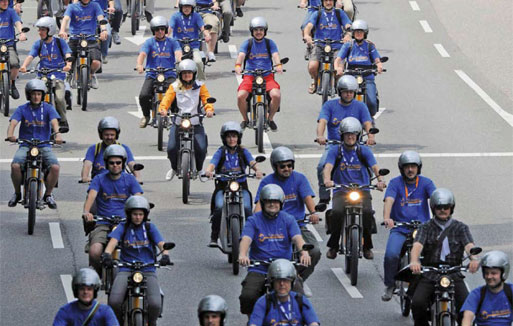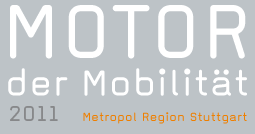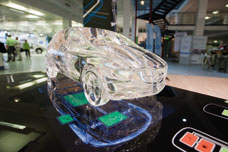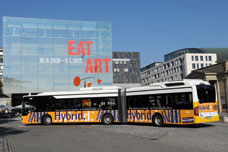New technologies for a mobile future
As Europe’s leading high-tech region, the Stuttgart region is also home to cuttingedge research institutions in the fields of fuel cell technology and hydrogen economy, such as the German Aerospace Center, the Centre for Solar Energy and Hydrogen Research, and Fraunhofer Institutes.
The activities of industry, research and politics are linked by the “Brennstoffzellen-Allianz Baden-Württemberg”. Stuttgart Airport is the site of Baden-Wuerttemberg’s first public hydrogen
filling station.
The region has set itself the task of reinventing the car and thus the cornerstone of tomorrow’s mobility.
Mercedes-Benz hybrid buses in daily use
From the outside, you scarcely notice the difference to a conventional diesel bus. It is not until you travel in one that you realise that this is no ordinary bus. Practically noiseless and jolt-free, the four electric motors in the 18 m long Citaro hybrid bus can step up speed at a tremendous rate.
The SSB (Stuttgarter Straßenbahnen AG [Stuttgart tram corporation]) has been using five Mercedes-Benz articulated buses with a combined electric and diesel drive in its regular service since 2010. In the city especially, with its great height differences, a considerable amount of fuel is saved thanks to the hybrid technology. As far back as 1979, Mercedes-Benz had
what was probably the world’s first hybrid bus, the Mercedes-Benz O 305 OE in use in Stuttgart and Wesel.
The Citaro G Blue Tec Hybrid is the only hybrid bus to date that can run purely on electricity without a diesel engine. Four electric wheel hub motors form the serial hybrid drive, drawing electricity from one of the world’s largest lithium-ion batteries in mobile use. The battery system generates max. 240 kW and, at less than 350 kg, is comparatively light.
The new hybrid buses proved highly successfully when put through their paces in a winter trial lasting several weeks at the Polar Circle under the most adverse conditions.

E-Bikes







 download .pdf
(295 KB)
download .pdf
(295 KB)